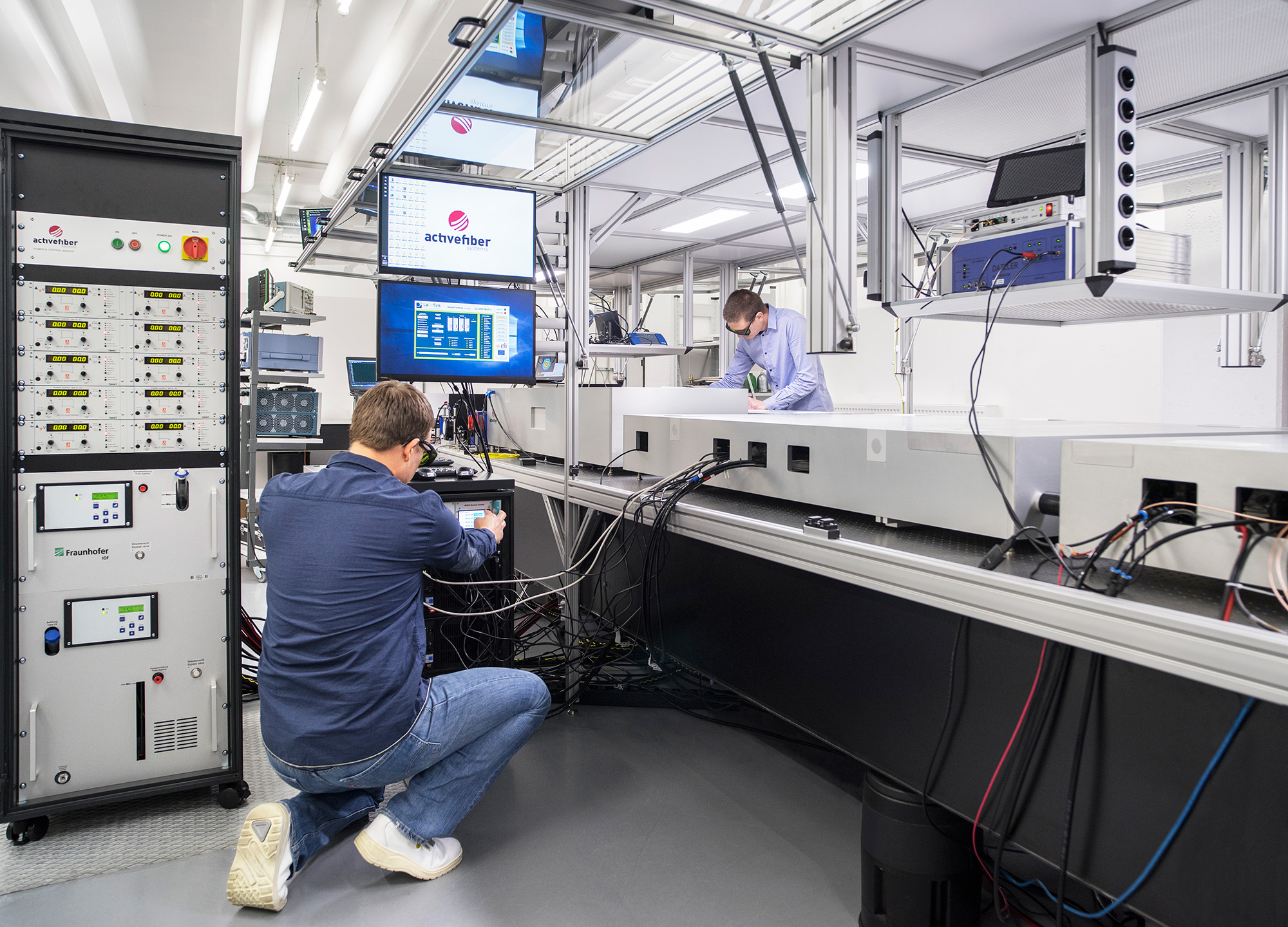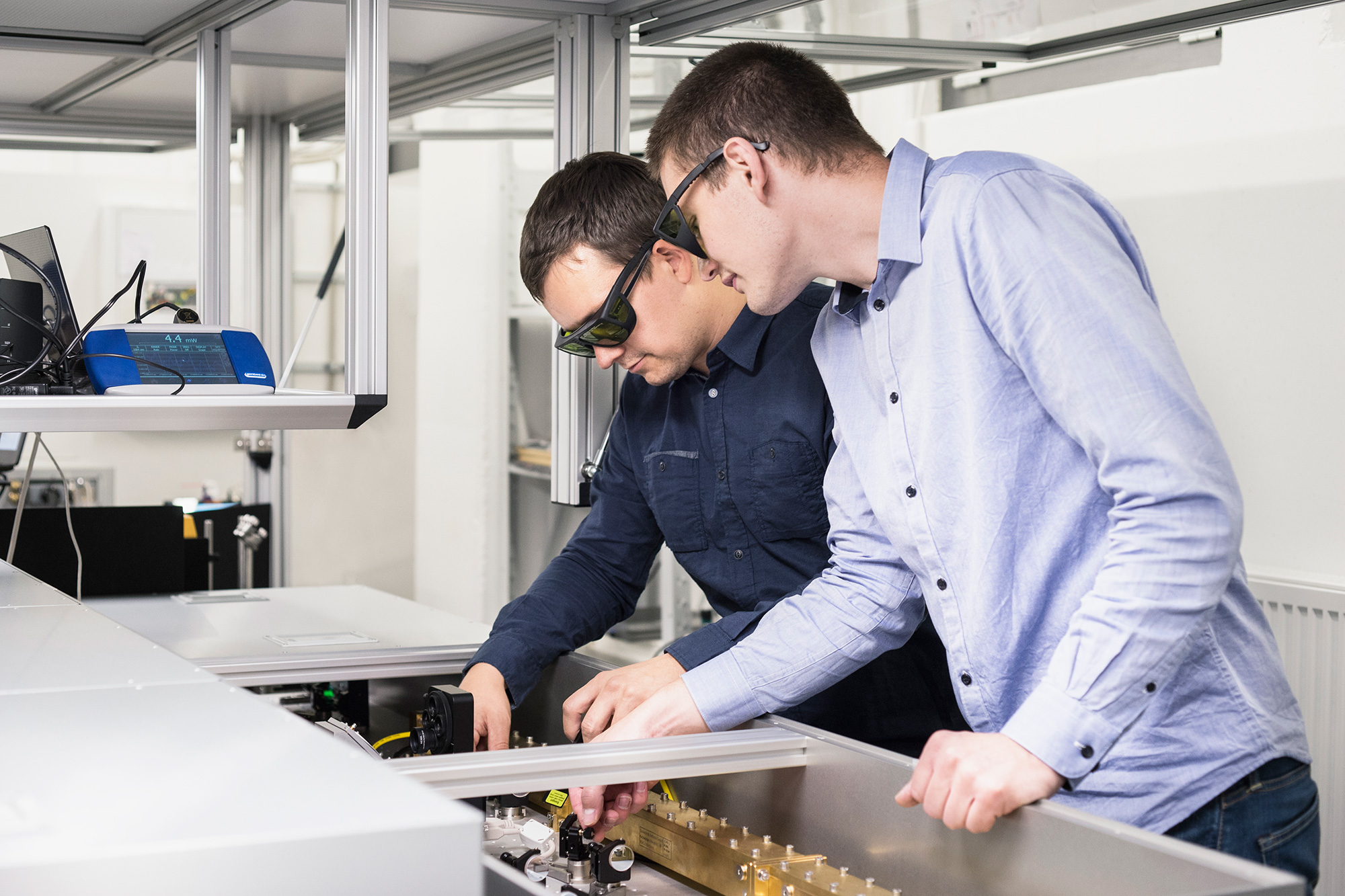World record laser pulses for ELI Hungary
Funded by the European Union, the institutes from the Extreme Light Infrastructure ELI currently contract the very best laser developers around the world. Among them is a team from Jena, Germany. They built a system that delivers more than 200 watts of 6 femtosecond pulses. That’s a world record, but it is just the beginning.


In Europe, a new era of laser science is dawning. Funded with more than 850 million euro from the European Regional Development Fund (ERDF) the Extreme Light Infrastructure is taking shape. This follows a European plan to build a new generation of large research facilities. The one for laser research is distributed over three countries: the Czech Republic, Hungary, and Romania. In October 2015, the Czech scientists were the first to complete their buildings; the others will follow soon. In 2018, laser installation will be completed and the whole infrastructure will act as a user facility where experimental time will be granted based on scientific excellence of the proposals.
Building world-class research institutions from scratch is an ambitious undertaking. It requires a global research effort, particularly if the envisioned device’s parameters are beyond the state of the art. Therefore, the ELI organizers partnered with the world’s best laser developers. While the civil engineers worked hard on site, the laser experts in places such as California, the United Kingdom, France and Lithuania started developing a new generation of laser sources.
Energetic Sub-2-Cycle Laser with 216 W Average Power
A team from the Friedrich Schiller University in Jena, the Fraunhofer Institute for Applied Optics and Precision Engineering IOF, and the startup company Active Fiber Systems GmbH in Jena joined with ELI Hungary to develop a new source for high-repetition-rate ultrashort pulses. The system is based on an femtosecond fiber laser with two nonlinear compression stages. That pump source incorporates a fiber chirped-pulse amplification (FCPA) system with a coherent combination of up to eight main amplifier channels. For some of the first tests, the system was run at 1.27 MHz, delivering 660 W. The final specification will be 100 kHz. The two nonlinear compression stages are based on noble-gas-filled capillaries. After the first stage, a pulse length of about 30 fs at 408 W (corresponding to 320 µJ pulse energy) was achieved. After the second stage and a subsequent compression, the system delivered 208 W of 6.3 fs pulses. This corresponds to less than two cycles at a center wavelength of 980 nm. The waveguiding of the capillaries led to an excellent beam profile. Detailed results were published in Optics Letters (http://dx.doi.org/10.1364/OL.41.004332).
Next Steps Toward a 24/7 User Facility
The team in Jena develops the laser system for the ELI Attosecond Light Pulse Source (ELI-ALPS) in Szeged, Hungary. The published results are derived from the first development phase of the high-repetition-rate ALPS light source. The target specifications are 1 mJ energy at 100 kHz repetition rate. Still, the pulse length should be kept at about 6 fs. Based on recent progress in the lab, the team in Jena is optimistic to deliver the system with these specifications in February 2017. The current specifications are unprecedented, but the final version in Szeged will be even stronger. In a second step, it will be upgraded to even higher energies of 5 mJ. When German laser scientists met in September with funding agencies to discuss their interest in ELI ALPS beam time, 70% of the participants showed interest in working with this HR system. It will be used to create high-repetition-rate attosecond pulses (1 as is 10-18 s). These pulses will allow researchers to follow electron motions in real time. They will enable essential progress in fields such as atom and molecule physics but also in solid-state physics and new disciplines such as plasmonics.